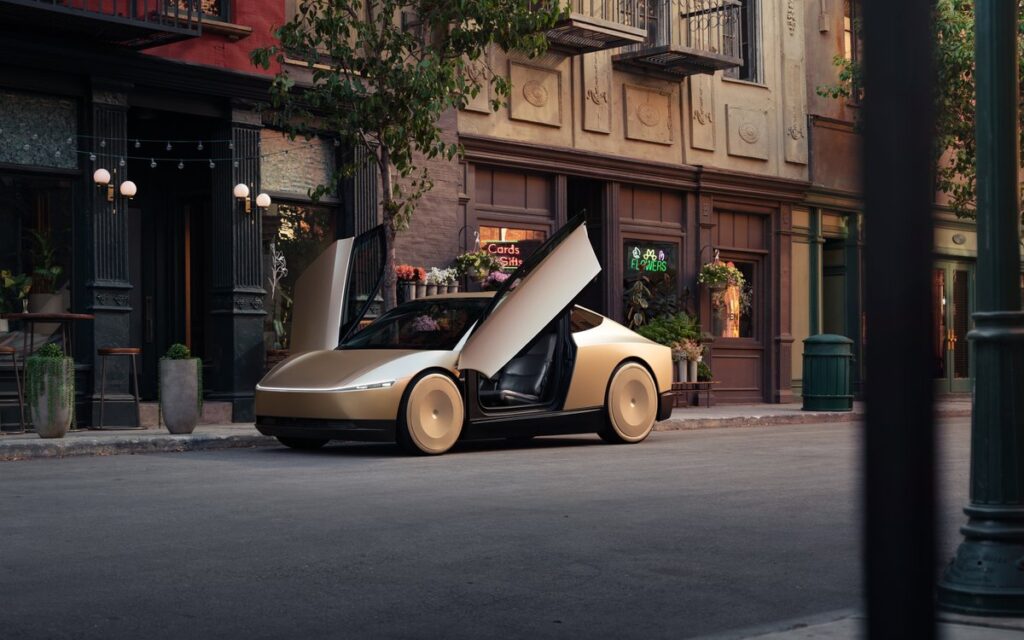Tesla CEO Elon Musk revealed the company’s long-awaited “Cybercab” and “Robovan” at a Hollywood event, marking a significant step forward in autonomous vehicle technology.
The new robotaxi, a sleek two-seater version of the Cybertruck, is fully electric, AI-powered, and notably lacks steering wheels or pedals.
While the futuristic vehicles were showcased in front of a live audience at Warner Bros. studio, they won’t be available for purchase until 2026, with Musk tentatively mentioning “before 2027.”
Musk expressed confidence in Tesla’s progress on Full Self-Driving (FSD) technology, which allows cars to operate without human intervention.
Despite having sold the software for nine years, skepticism remains regarding its reliability. During the event, Musk reiterated Tesla’s aim to reduce transportation costs, estimating that the Cybercab’s operating cost will be approximately $0.20 per mile.
Additionally, he assured attendees that the company’s FSD technology would be available on Tesla’s Model 3 and Model Y vehicles in Texas and California as early as 2025.
In a demonstration, Musk drove the Cybercab around the Hollywood studio, showing off its advanced AI capabilities. Fans were given the opportunity to ride in one of 20 Cybercabs on-site.

Musk underscored the vision of “individualized mass transit,” which would make the cost of autonomous transport highly affordable. Tesla expects each Cybercab to cost under $30,000.
Tesla also introduced Optimus humanoid robots at the event. These robots, priced between $20,000 and $30,000, danced, mixed drinks, and interacted with guests.
While their advanced features, such as different accents and voice personas, were displayed, it remains unclear if these were remote-controlled by humans or entirely autonomous.

Though Tesla’s unveiling showcased its bold technological ambitions, competition in the autonomous vehicle market is fierce. Rival companies like Waymo, General Motors’ Cruise, and Aurora Innovation have already deployed or plan to roll out similar technologies.
Meanwhile, Tesla’s self-driving ambitions have drawn attention from U.S. safety regulators. The National Highway Traffic Safety Administration (NHTSA) is investigating Tesla’s Full Self-Driving system following a fatal crash involving a Tesla on FSD in Washington.
Tesla’s Cybercab announcement highlights the company’s forward-thinking approach to AI and autonomous driving, but the repeated delays in rolling out Full Self-Driving features could raise concerns among marketers and investors alike.
As competitors continue to innovate in this space, Tesla will need to prove that its self-driving technology can stand the test of time—without further setbacks.




















































